Meet the Presenter

This article is based on a Webinar originally presented by STLE Education on Jan. 23, 2020, featuring the keynote speech that Dr. Martin Webster was scheduled to give at the 2019 STLE Tribology Frontiers Conference. It is intended for a general audience. Webster’s ExxonMobil colleagues, Spyridon Korres and STLE-member Weixue Tian, assisted with the content. Lubrication and Tribology Trends and Challenges in EVs is available at www.stle.org : $39 to STLE members, $59 for all others.
STLE Past President Dr. Martin Webster has more than 30 years of experience working with ExxonMobil in both research and product development positions. He is currently a senior research associate in ExxonMobil’s Lubricant Technology function located in Clinton, N.J. His research focus has been on the fundamentals of lubricated contacts, including the measurement and characterization of elastohydrodynamic lubrication (EHL) performance, modeling EHL contacts, rolling contact fatigue phenomenon and the interactions of lubricant components with engineering surfaces. He has published numerous papers and patents in each of these areas. Webster has been active in various societies and technical committees, including the Gear Research Institute, the ASME Rolling Element Bearing Committee and the STLE Gears and Gear Lubrication Technical Committee. He served as 2015-2016 STLE President. In 2019, he was elected an STLE Fellow. You can reach Webster at martin.n.webster@exxonmobil.com.
KEY CONCEPTS
•
Fewer internal combustion engine (ICE) vehicles will be able to meet future emissions standards.
•
What separates an ICE vehicle from an EV are the batteries, motor and transmission.
•
While EVs require lubrication, friction reduction is more important in an EV than in an ICE vehicle.
Automotive press releases and announcements are becoming more focused on electric vehicle (EV) development. Examples include:
•
December 2018: Volkswagen announces it is working on the last platform for vehicles that aren’t CO
2 neutral, gradually fading out combustion engines to a minimum.
•
January 2018: Mercedes-Benz announces plans to build EVs in volume across six plants, three continents, and establish a global battery network.
•
October 2018: Ford announces plans to spend $11 billion on all EVs between now and 2022.
•
October 2018: Groupe Renault announces new affordable urban EV and new hybrid electric vehicle (HEV) and battery hybrid electric vehicle (BHEV) versions of its three most popular vehicles.
•
January 2019: General Motors announces it will introduce 20 new electric cars by 2022.
EVs are not new; in fact, the earliest forms of horseless carriages were electric. In 1901, history notes that a Columbia electric carriage was tried out by Queen Alexandra. Her spokesperson commented: “Her majesty…is delighted with the ease and simplicity of control and manipulation (
1).”
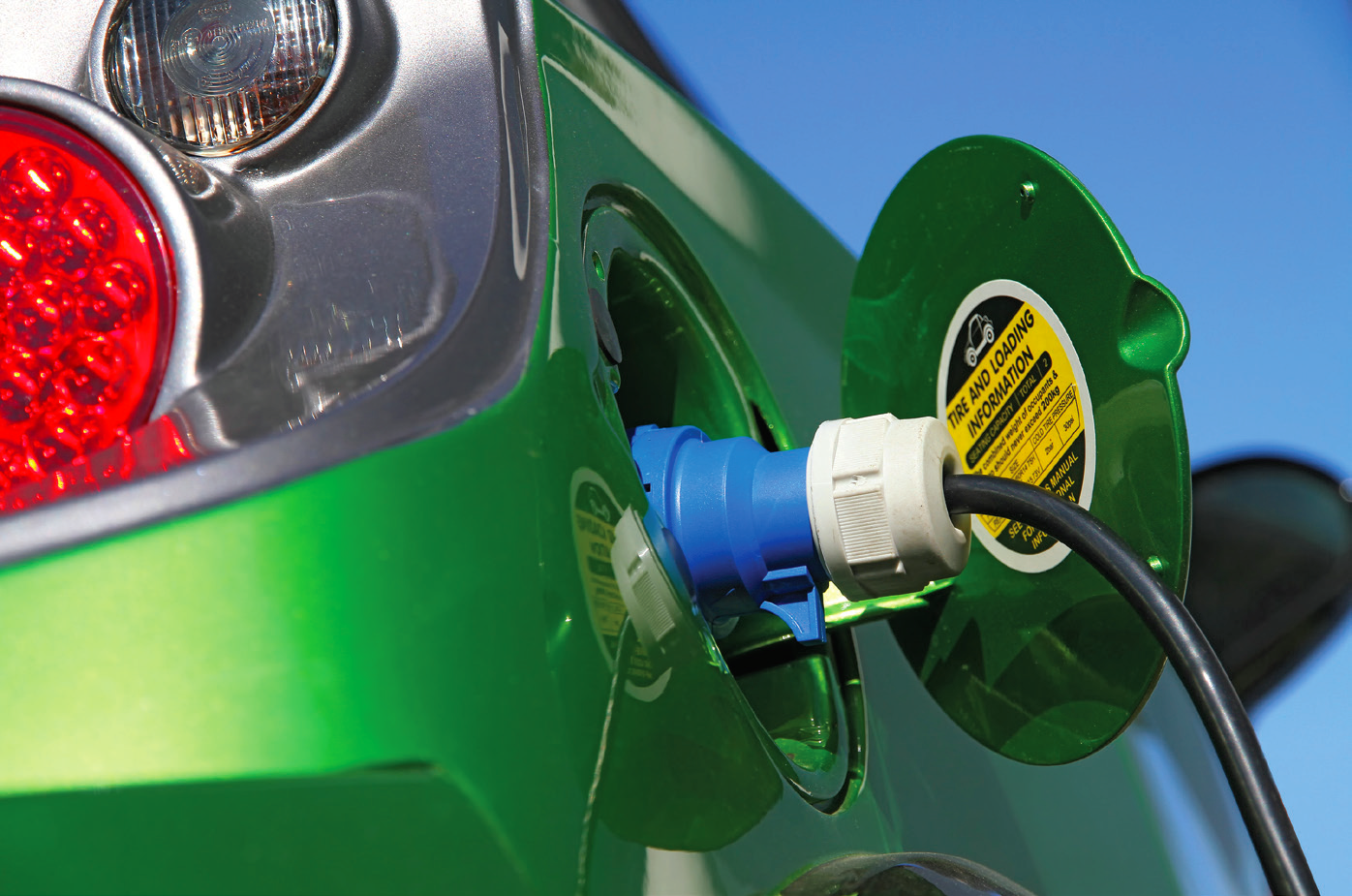
Development has been gradual until recently when increasing global climate change concerns have resulted in stricter vehicle emission standards. Vehicles with internal combustion engines (ICEs) may be completely banned from use in some urban areas. In 2018, a United Nations (UN) IPCC (
2) report highlighted a series of aggressive measures that would be necessary to achieve targets of net zero emissions by 2040 and 2055.
“This is a trend that will not go away quickly,” STLE Past President Dr. Martin Webster, senior research associate for ExxonMobil, says. “In fact, it really isn’t a trend anymore at all.”
This article is based on an STLE Education Webinar presented by Webster on Jan. 23, featuring the keynote speech that he was scheduled to give at the 2019 STLE Tribology Frontiers Conference. See
Meet the Presenter at the end of this article.
It is apparent that only a small percentage of current vehicles will meet future standards. Recent studies suggest that by 2025, only today’s HEVs, plug-in hybrid electric vehicles (PHEVs) and EVs will meet these increasingly tight standards. While ICE technology will continue to make strides toward lower emissions, electrification will become an increasingly important strategy.
“Fewer and fewer ICE vehicles will be able to meet future emissions standards as they get tighter and tighter,” Webster says. “This is not to say that ICEs can’t be improved, but electrification will become increasingly important—ICE vehicles can only improve so much (
see Figure 1).”
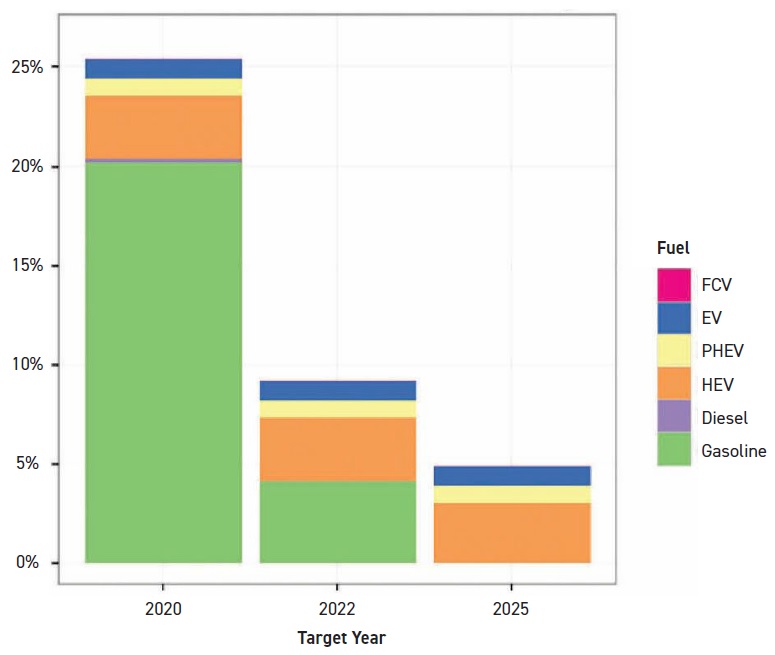 Figure 1. Model year 2017 production that meets or exceeds future CO2 emissions targets. (Figure courtesy of the U.S. Environmental Protection Agency.)
Outlook for EVs
Figure 1. Model year 2017 production that meets or exceeds future CO2 emissions targets. (Figure courtesy of the U.S. Environmental Protection Agency.)
Outlook for EVs
Webster predicts that EVs will gain increasing share of the global market, although there is a wide disparity on 2040 projections. While ICE vehicles will remain dominant for the foreseeable future, full hybrid and EVs represent the fastest growing segment.
The STLE 2017 Report on Emerging Issues and Trends in Tribology and Lubrication Engineering confirmed a long-term trend toward vehicle electrification. To demonstrate how fast the EV market is moving, pure electric vehicles were not even included in the 2014 version of this report.
“I encourage everyone to go out and look at the STLE 2017 Trends Report,” Webster says. “The trends look at both near-term five to 10 years and 10-plus years. A lot of the near-term trends are what we would expect, areas such as turbocharging. When you look out 10-plus years, electrification becomes dominant. In the STLE 2014 Trends Report, electric vehicles weren’t even included as a category. They went from being virtually invisible to extremely important in three years.”
The STLE 2020 Report on Emerging Issues and Trends in Tribology and Lubrication Engineering is now available at
www.stle.org.
EV trends are not uniform around the world—they are stronger in Europe and Asia. However, self-driving cars, which are developing in parallel with EVs, are stronger in North America. “The adoption of electric vehicles is often regional, and there also might be a difference in urban and rural use,” Webster says.
EV components and lubrication
A pure EV has no internal combustion engine. In essence, what separates an ICE vehicle from an EV are the batteries, motor and transmission. While there are stark differences, Webster comments there are still many common elements such as the body structure, the passenger compartment, tires (EVs can actually be harder on tires), windshield wipers, etc. While EVs have the same basic common components, the layout and details vary among OEMs (
see Figure 2).
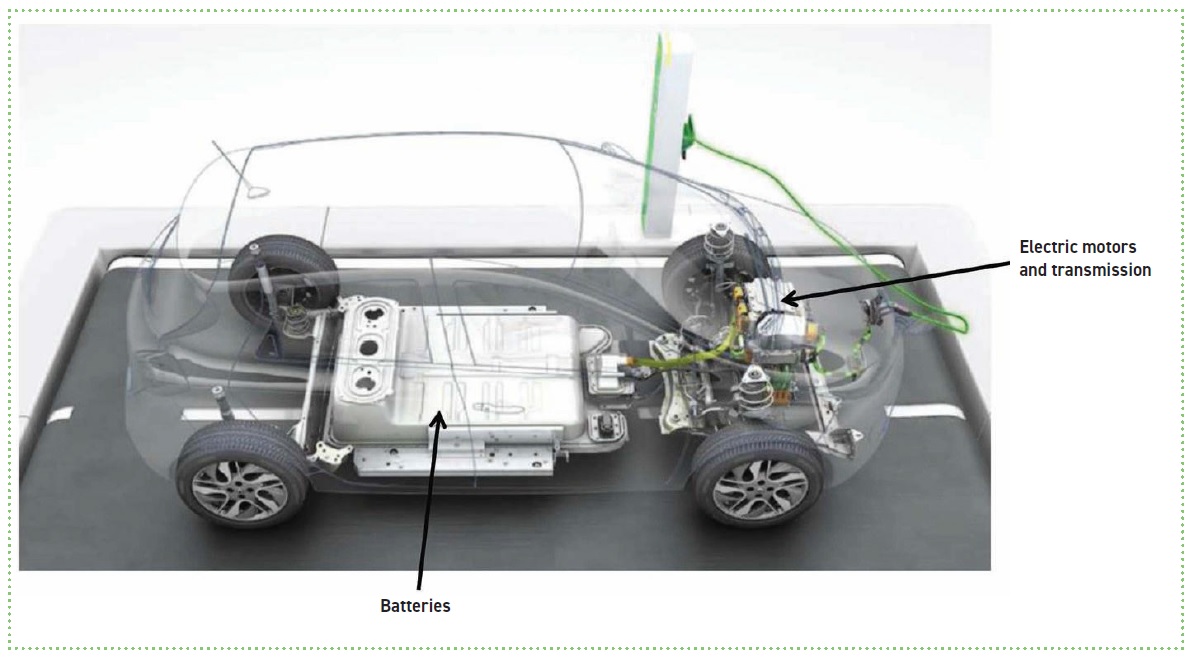 Figure 2. Electric vehicle components. (Figure courtesy of ExxonMobil Research and Engineering.)
Figure 2. Electric vehicle components. (Figure courtesy of ExxonMobil Research and Engineering.)
EVs will present many tribology challenges:
•
Reduced friction losses
•
Driveline
•
Bearings
•
Constant velocity joints (CVJs)
•
Tires
•
Ancillary components
•
Noise
•
Driveline components
-
Tires
-
Rattles and squeaks
•
Electrical connectors—long-term wear and corrosion.
Electric vehicles do require lubrication, and friction reduction is more important in an EV than in an ICE vehicle—the primary reason being increasing the range, which is a major consumer concern. All of this makes tribology more, rather than less, important.
With EVs, the need for tribology is in the areas of:
•
Component design and materials
•
Driveline tribology and gear oils
•
Lubricant coolants and other fluids
•
Bearings and greases.
With EVs, the lubrication focus shifts away from hydrodynamics to elastohydrodynamic (EHL) and boundary lubrication mechanisms, and from load carrying to torque transferring. This is a radical and fundamental change in lubrication conditions.
Driveline challenges
Electric motors have very different torque and power curves. “An ICE needs to be running to develop power and torque,” Webster explains. “A clutch is required to decouple the engine from the gearbox so that power can be transferred from a standstill. In contrast, an EV develops torque right from the start, and it can continue providing power over a relatively wide speed range. So you are delivering power in very different ways (
see Figure 3).”
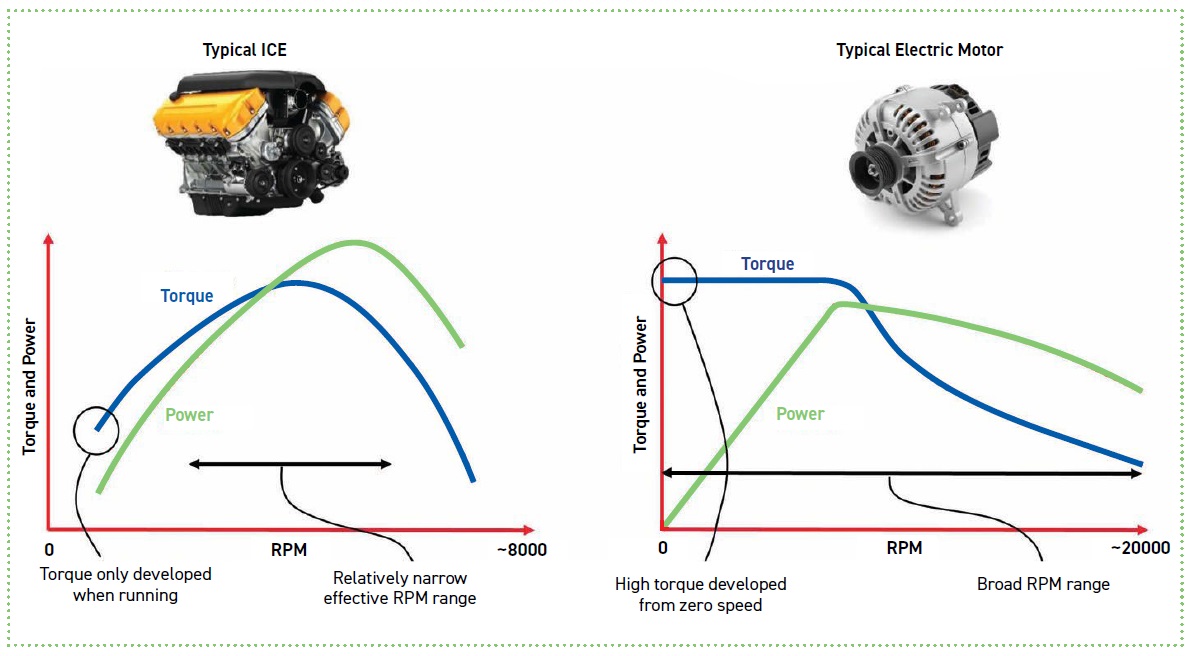 Figure 3. Differences between ICE vehicle and EV torque and power curves. (Figure courtesy of ExxonMobil Research and Engineering.)
Figure 3. Differences between ICE vehicle and EV torque and power curves. (Figure courtesy of ExxonMobil Research and Engineering.)
Following are a few differences between ICE vehicle and EV transmission design.
ICE
•
Clutch required
•
Multiple gear ratios needed
•
Trend to add more ratios
•
Multiple configurations
-
Manual
-
Auto
-
CVT.
EV motor
•
Clutch not needed
•
Can use single ratio
•
Multiple ratios improve efficiency
•
High input, shaft speed
•
Motor and gearbox can be combined
-
Dry
-
Wet.
The number of gear ratios in an ICE vehicle is steadily increasing in order to improve energy efficiency. ICE drivelines operate over a relatively limited range of EHL film response. The presence of different gear ratios limits the range of input shaft speed. “While an ICE gearbox can look complicated, the lubrication challenge may not be as challenging as in a typical EV,” Webster says.
In single ratio EV drive, it is not easy to balance input and output shaft lubrication requirements for the individual bearings and gears. The bigger speed difference and single ratio results in a much broader range of operating conditions in an EV than with a traditional gearbox. Also, an EV can generate very high torque loading from starting through low RPM. This places a severe load on the lubricated contacts before they develop thick EHL films at the higher speeds.
EVs might require new gear oil additive chemistry and test methods for wear protection under the EV’s high-load/lower-temperature operating conditions. It is likely that new gear tests and standards will need to be developed. “We are getting a much better understanding of how additive films are created and how they respond to the operating environment,” Webster says. This will provide opportunities to apply these most recent advances to the development of the next generation of EV lubricants.
Advanced lubricants can improve EV driveline performance by:
•
Improving gear efficiency
-
To improve performance
-
Lower temperatures
-
Increase range (which is crucial).
Moving to a lower viscosity will reduce churning and pumping losses, and a lower EHL traction will reduce friction losses. Current options include the use of high-performance synthetic gear oils; there also is the potential to reduce friction further using new fluid technology.
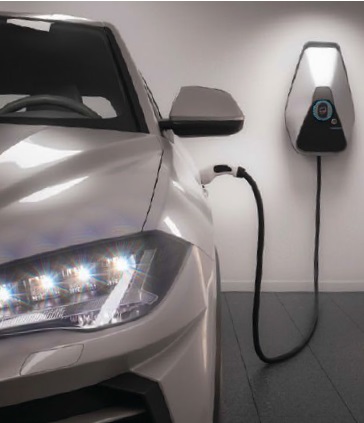
At high RPM, lowering lubricant viscosity may not yield efficiency benefits. Typically, gearbox churning losses are reduced with lower viscosity lubricants. However, in some cases it has been observed that churning losses may increase as viscosity is decreased. At high speed, churning losses appear to be more sensitive to design and fluid properties.
“Understanding the flow of lubricant in a gearbox is something that is going to be critical or at least more important in developing drives that reduce friction to a minimum,” Webster says.
Thermal management
“I was astonished at the complexity of the cooling system and the length of pipe work the fluid needs to flow through,” Webster says. “The pipe work, valves and complexity of the system is a lot more than I anticipated.”
Oil flow and air entrainment are concerns at higher speeds. Extreme air entrainment conditions may reduce cooling efficiency and introduce foaming problems. Advanced simulation tools may lead to a better understanding of the interaction of the mechanical design, lubricant properties and system performance.
Many components, including the battery, electronics and motor, require active thermal management for the following reasons:
•
Battery
-
Limited output
-
Battery degradation
-
Heating required
-
Cooling required
-
Ideal operating temperatures
•
Electronics
-
Power electronics can heat up quickly
-
Need to limit temperatures to about 60 C
•
Motor
-
Motor efficiency decreases at elevated temps
-
High temperatures can result in damage
-
Copper wire insulation
-
Loss of magnetism.
“Thermal management is evolving as a core area of interest,” Webster says. “It actually includes heating as well as cooling. An example is warming at startup to achieve reasonable battery output; at the other end, if you exceed a certain temperature, you can permanently degrade the battery.”
Power electronics will heat up quickly. The EV motor is efficient, but it will still generate heat—this is where efficiency will decrease. It can cause permanent damage, require replacement of the motor and create loss of magnetism.
Cooling strategies vary between EV manufacturers (
see Figure 4):
•
Single water-glycol system for the battery, motors and power electronics
•
Refrigeration system for the battery: water-glycol for the motor and electronics
•
Forced air system for the battery and motors: water-glycol for electronics.
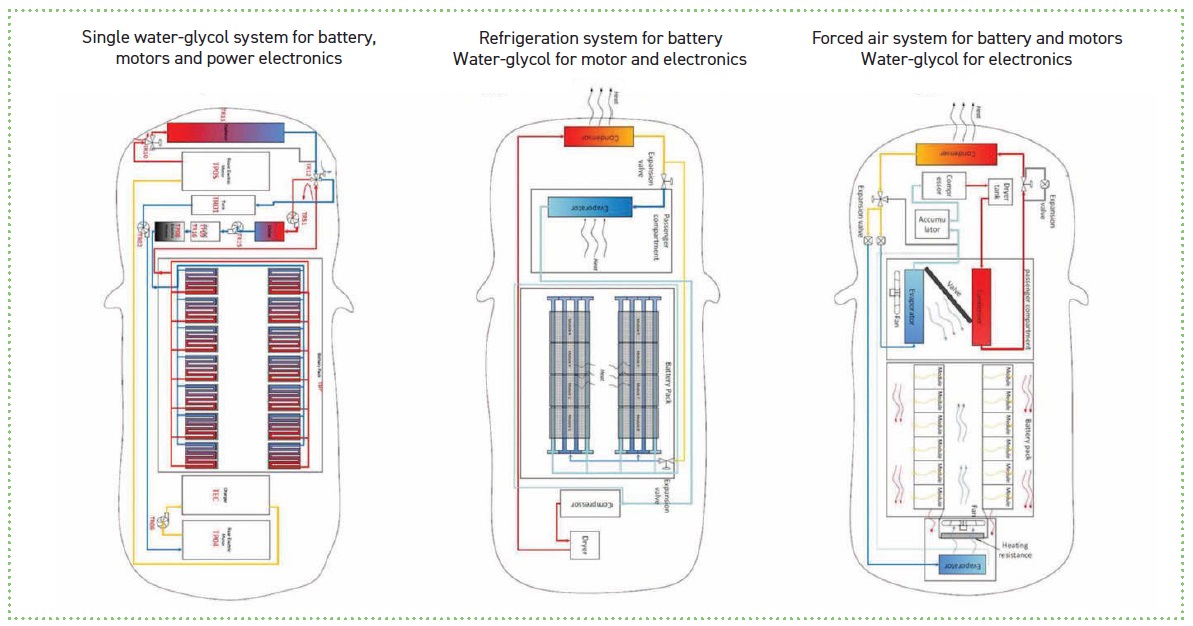 Figure 4. Variation of cooling strategies among OEMs. (Figure courtesy of ExxonMobil Research and Engineering.)
Figure 4. Variation of cooling strategies among OEMs. (Figure courtesy of ExxonMobil Research and Engineering.)
“The cooling strategy is different between OEMs, but the challenge is the same,” Webster says. “There needs to be thermal management of all the systems. We are still searching for that optimum system. For the coolant, pumping losses have become a huge issue and are driving the need to lower viscosity fluids.”
Combining lubrication and thermal performance is a major challenge. Efficient cooling requires a specific combination of fluid properties: high-density, high-thermal conductivity and high-specific heat capacity and low-dynamic viscosity. Improving heat transfer impacts other physical properties such as flash point and volatility—major considerations for low-viscosity fluids. Mainstream hydrocarbons exhibit a limited range of thermal properties.
“Lubrication and cooling are a little antagonistic,” Webster says. “Water is a good coolant, but generally speaking, it is not a good lubricant. “One of the things we have been exploring is whether we can use hydrocarbons in a different way—with direct contact rather than having an interface.”
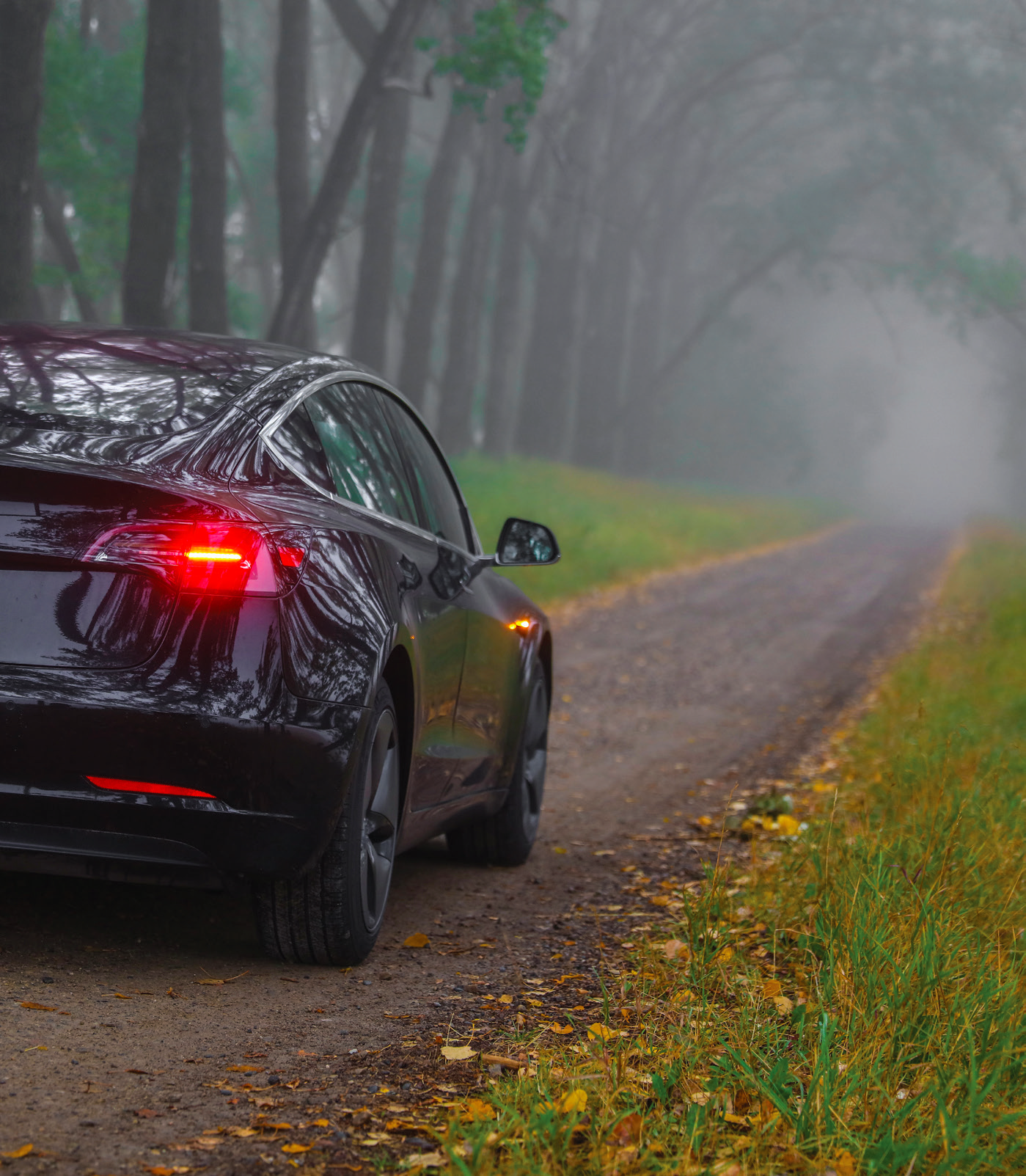 Where do we go from here?
Where do we go from here?
EV fluids will need a different balance of properties. In summary:
•
Lubrication
-
Low EHL traction
-
Wear protection
-
Reduced churning losses
-
Optimized system oil flow
-
Foam and air release
•
Thermal management
-
High thermal properties
-
Low viscosity
•
Acceptable electrical properties
-
Conductivity
-
Breakdown voltage
-
Non-corrosive to electronics.
New applications can create unforeseen challenges and might provide the tribology community an opportunity to improve future EV technology. “As tribologists, we need to play an active role in helping this technology evolve,” Webster concludes. “After 30 years of development, wind turbine tribology issues still remain. Maybe we can be a bit more proactive than we were with wind turbines. As with wind turbines, we are at the beginning of an evolving technology.”
REFERENCES
1. Available
here.
2. IPCC = Intergovernmental Panel on Climate Change.
Jeanna Van Rensselar heads her own communication/public relations firm, Smart PR Communications, in Naperville, Ill. You can reach her at jeanna@smartprcommunications.com.